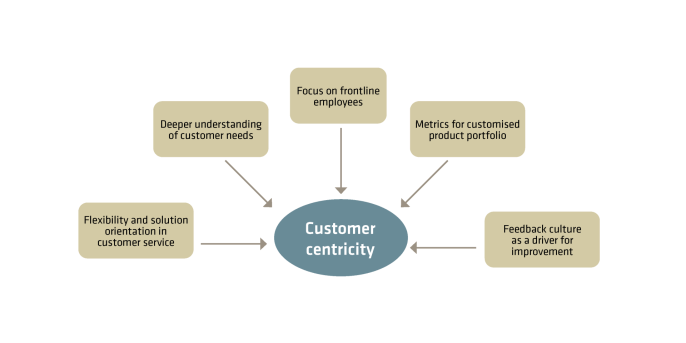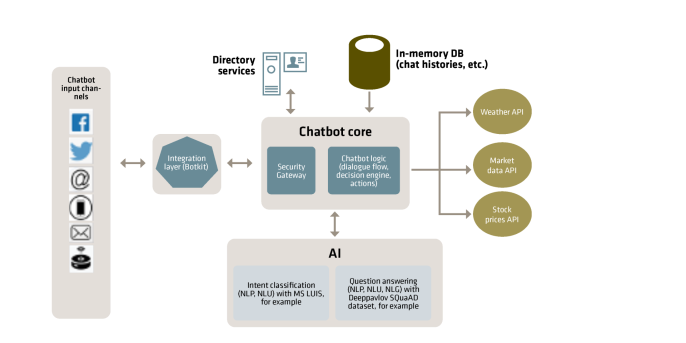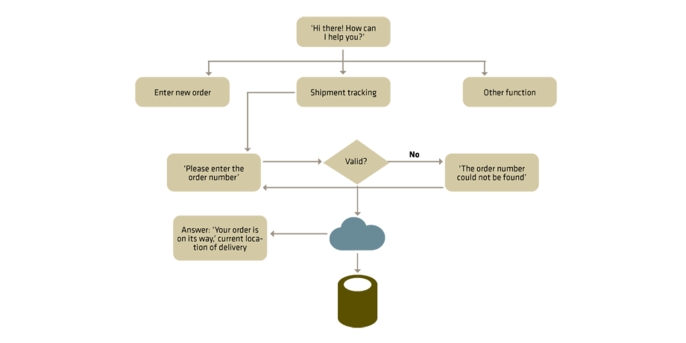3. November 2020 By Dr. Stephan Pohl
Chatbots – driving the customer-centric enterprise
Customer centricity
The magic formula for business success in 2020 is customer centricity and companies are putting customers at the centre of their processes and operating organisations. The reasons for this are tougher competition, increasing regulatory pressure as a result of the global financial and debt crises and, last but not least, the high level of information among customers themselves. These framework conditions require an approach that is geared towards close customer retention for companies via a variety of direct and indirect communication channels. This sort of paradigm shift has profound implications for the entrepreneurial mindset: all business processes and the operational organisations are aligned to customers or to put it bluntly – The customer no longer exists for the sake of the processes; instead, the processes and the business organisation are there to serve the customer. They are measure of all things.

Customer centricity in the company
Chatbots – customer retention and savings potential
According to the US market research company Grand View Research, the market volume for chatbots will be more than $1.2 billion in 2025 and the annual growth rate will be 24 per cent (https://www.grandviewresearch.com/press-release/global-chatbot-market). Accordingly, the bulk of this will be accounted for by the trading sector, banks and insurance companies. After all, these industries benefit particularly from direct customer contact. At the same time, CTOs expect reduced operating costs in customer operations and greater customer satisfaction.
Chatbots combine artificial intelligence (AI) and traditional business processes under one roof. From a management perspective, they offer the following advantages:
- Savings in personnel costs, for example, in call centres.
- Simplification of customer processes in general
- Real-time information exchange between customer and company
- Round the clock availability
Chatbot architecture
In terms of the desired customer centricity, chatbot applications must fit seamlessly into a company’s service landscape. Ideally, the customer will forget that they are communicating with an intelligent software system and not with an actual person as the conversation goes on. Plus, companies are looking for chatbots to identify the customer’s concerns with exact precision. A key to achieving these development goals is the use of advanced AI techniques.
Let’s take a look at the inner workings of a chatbot application. The following diagram shows how the building blocks of a generic chatbot architecture work and interact:

Generic chatbot architecture
Input channels
The user starts the chat conversation via an input channel of their choice. This could be using the Facebook Messenger app, a voice app such as Alexa, a desktop application or something else. When booking a flight, the chat message at the beginning of the conversation might read as follows: ‘book a flight for two people from Frankfurt to London next Monday.’ This initial message is sent from the inbound channel to a message backend.
Integration layer
The integration layer is a link that is responsible for passing the chat message between input channels and chatbot core. It reduces the complexity of the core, which does not require knowledge regarding the channels. Botkit is a freely available and widely used framework (https://botkit.ai/).
Chatbot core
Security gateway – First, an authentication and authorisation check takes place in the chatbot core (‘Is chat participant X already known and if so, are they authorised to access protected information such as account or company data?’). If the security check is successful, the chat message is forwarded to the chatbot logic.
Chatbot logic – The chat message, written in natural language, is now syntactically analysed using natural language processing (NLP) methods and components, and converted into a machine-readable format for further processing.
Intent classification – The next step is to assign the chat message to a category or domain based on its intent. If the message is about a flight booking, does the chat participant want to retrieve account information or should, for example, an overview of the insurance status be retrieved? There is now a variety of AI components with pre-built training models that can be integrated into chatbot development for this task. Microsoft, for instance, offers the cloud-based API Language Understanding Intelligence Service (LUIS), which includes a variety of predefined domain models for intent recognition and other features.
The example below shows the use of the open source AI framework Deeppavlov (http://deeppavlov.ai/), which was implemented in Python and can be used both in standalone mode and as a REST API. The IntentSnips training model, a Deepavlov extension, recognises seven intents by default based on any linguistic utterance (utterance in chatbot jargon) – including the domain ‘weather’. The sentence ‘Is it raining in Dortmund?’ is assigned to the Getheather intent here:

Flow control (dialogue flow) – After intent detection, the chatbot core knows what domain conversation partner is talking about (for example, stock quotes, stock ticker, damage report, shipment tracking or weather forecast). It can now use dialogue control to narrow down the participant’s concerns using questions and answers. The dialogue flow is over when the chat participant has either received a sufficiently qualified answer (the evaluation of whether an answer is sufficiently qualified is equally dependent on the chat system) or whether an expert advisor is needed to solve the problem. In the latter case, the chatbot core determines the responsible expert advisor and directs the case to them. The implementation of the flow control can be done either by a proprietary development or by using third-party tools, such as Google Dialogflow.

Question tree for the ‘shipment tracking’ process
Automated question answering (QnA, NLU) – Commercial or open-source question and answer systems are available for natural language understanding (NLU) and automated question answering (QnA) from a dedicated domain within a dialogue step. These come with ready-made training models and can be expanded with self-developed learning models, if required. This makes me think of Microsoft QnA Maker, Microsoft LUIS or the open-source AI frameworks RASA and Deeppavlov SQuAD.
In the example below, Deeppavlov SQuAD was used for a question-answer scenario from the ‘weather’ domain. We initially feed the model with unstructured text modules from the field of meteorology, which describes the formation of several forms of precipitation. If we then ask the trained model the question ‘At which point do water drops collide with ice crystals and form precipitation,’ we receive the correct meteorological answer. We also receive the correct answer if we modify the question text or formulate it in other languages.

Conclusion
Market research companies and managers agree that chatbots are growth drivers in the medium term and have the potential to permanently change the rules of the game for entire industries. Historically, however, development is still in its infancy. The following challenges still need to be addressed:
on the one hand, chatbots developers must comply with the provisions of the European Data Protection Regulation (GDPR). These include the right to be forgotten, the right to erasure, the contract for commissioned processing and many other regulations. Failure to do so may result in severe penalties. In addition, amendments to legislation as a result of current events must always be expected, but these do not always lead to the abolition of existing laws without them being replaced.
There are also huge technical hurdles in chatbot development: with regard to the highest possible rate of identification of customer concerns, the goal is to reach a hit accuracy of almost 100 per cent. This requires the AI engines to be extensively trained and customised, which are extremely complex to maintain and improve. This goal can only be achieved through the close, iterative cooperation of experts, customer service, data scientists, architects and developers. It looks like this topic is going to remain exciting...

